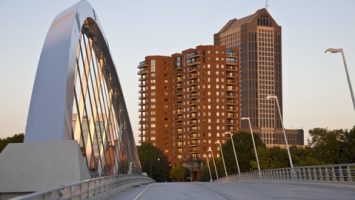
Areti Markopoulou – a Greek architect, educator and urban technologist and the head of the Digital Matter Intelligent Constructions studio at the Institute for Advanced Architecture of Catalonia (IAAC) in Barcelona – has developed five alternatives based on bioclimatic architecture that reduce the use of air conditioners enabling a greater money saving and improving a significant energy efficiency when cooling building spaces. The passive air-conditioning uses a combination of new materials, adaptive structures, and robotics that help regulate temperature and create sustainable micro climates.
One method creates systems that act like a second skin in buildings to regulate the temperature. ‘Hydroceramics’ uses clay panels and hydrogel that have the capacity to absorb up to 500 times their own weight in water to create a skin that “breathes”, thus simulating a living organism by perspiring water to regulate high temperatures. ‘Hydromembrane’ and ‘Breathing Skin’ work similarly, but are based on compounds made with fine membranes and intelligent fabrics which simultaneously can self-regulate humidity as well as indoor and outdoor climates.
‘Morphluid’ or ‘Soft Robotics’ (SORO) are created as passive shading systems using “live roofs” that regulate the amount of light and heat entering the spaces. Soft Robotics is a lightweight robotic shading device that works to create a microclimate by controlling sunlight, ventilation and temperature. It can adopt several sizes and shapes to mimic artificial “sunflowers” that activate the shading technology when the liquid within the device is evaporated by the sun’s heat. Morphluid uses two water tanks that tilt when the water in one of the tanks evaporates, allowing continuous shade.
Markopoulou states, “The potential of advanced systems and materials to help us have the most pleasant temperature in our homes through more sustainable buildings that breathe and behave the living things and interact with their environment.”


